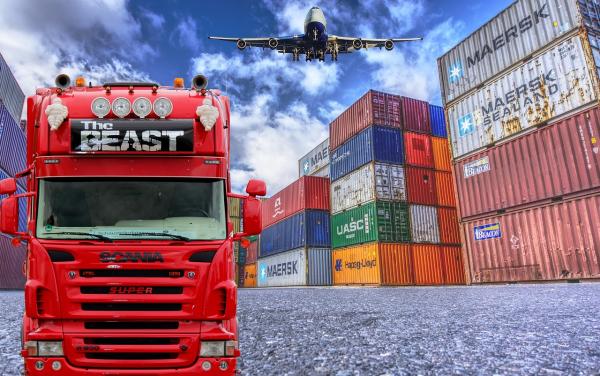Agricultural and food (agri-food) supply chains are critical infrastructure and “underpin political and economic stability,” – a “key part of national security.” A new study of those food chains in Nature Food looks at our national agri-food supply chains. More specifically, it considers choke points – single points of failure that jeopardize food on the shelves.
While some have focused on food production, growing crops, or raising cattle, are not easily moved from where they are already located. The researchers instead considered the chokepoints reflecting food processing, distribution, and transportation – facilities, and networks that might more easily be shifted or reproduced to enhance resilience.

The image depicts our agri-food supply chain networks. The map to the left describes the network based on our transportation hubs; the map to the right illustrates the network based on the communities they reside within. While the two views do not exactly map upon one another, it is apparent that the distribution chokepoints in our agri-food supply chain reside in Southern California, an area in Texas, Pennsylvania, Chicago, and the greater New York City area. Some of California’s and New York’s predominance is as “ports of entry” for imported foodstuffs. Much of COVID-induced scarcity came from disrupting Los Angeles – Long Beach harbor activities.
“Each agri-food commodity group has unique production, processing, and distribution requirements leading to differences in chokepoint location.”

Choke points can also be viewed traditionally based on the specific commodity. While cereals have usually come from our “breadbasket,” the Midwest, when accounting for distribution, our contemporary sources now include Texas and Idaho. And who among consumers would have anticipated that so much animal feed comes from Pennsylvania?
The bottom map is the aggregate processing and distribution of our food. Once again, it is centered in Southern California, Chicago, the greater New York area, along with Texas and Pennsylvania.
In many ways, our eggs are literally in, if not one, only a few baskets.
Fun fact – processed foods, our most stable food commodities, come from 3 distribution areas, Chicago, LA, and New York allowing them to be both nationally and globally distributed. In preparing for food disruptions, stockpiling processed foods is the easiest option – but with only three distribution hubs, those foodstuffs are not necessarily secured.
The researchers acknowledge that analyzing the agri-food supply chain solely based on distribution is insufficient. Other considerations might include analysis be mass, which impacts the mode of transportation, or calories and nutrients that would help prioritize how we might build more resilience into these networks.
USDA plans to improve agri-food supply chain resilience, include
- Loan programs to facilitate small production facilities improving geographic distribution.
- Enhancements of food-specific infrastructure, e.g., cold storage facilities and trucks.
- Development of more small to mid-size regional distribution.
While some might consider the USDA plans to increase the supply of food, including an “organic transition” program and urban farming commendable, and applaud infusions of money to reduce food “deserts” and subsidize the purchase of foods by seniors, and those with nutritional deficiencies only urban farming and reduction of food deserts address issues in the supply chain. Could some of those other funds, significantly the $300 million earmarked for “organic transitioning” (where the food is more costly but not necessarily more nutritious), go to “harden” the roads, rails, and bridges leading from our few transportation hubs to the rest of the country?
Source: Structural chokepoints determine the resilience of agri-food supply chains in the United States. Nature Food DOI: 10.1038/s43016-023-00793-




